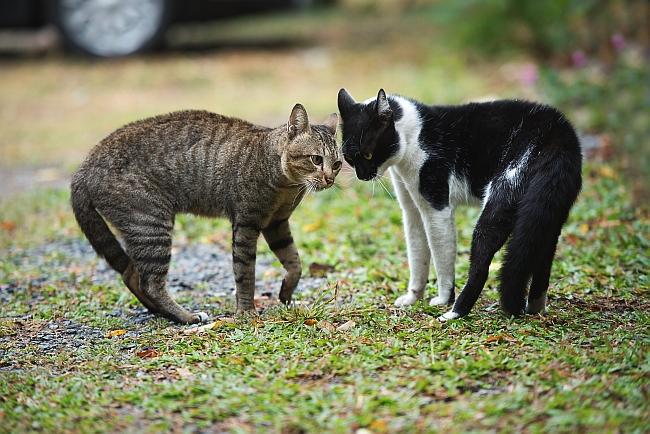
Animals tend to act out when they get around other unfamiliar pets. Dogs sniff each other to assess who is the “top” dog, and cats mimic the same sort of thing by walking in circles around each other in a kind of dance. For this reason, pet parents have to work doubly hard to properly integrate their pets with any newcomer, so that utter disaster does not ensue. But what causes inter-animal spats, and why do cat fights occur? Here is a brief summary of the main types of aggression felines experience, as well as what incites them to respond the way that they do.
Territorial Aggression
A cat feels territorial when an area that he views as his own space or property is either invaded or impinged upon. If he views himself as the alpha cat, and then another cat threatens his authority or position, it will incite his natural instinct to be territorial and defend his dominion. Surprisingly, not just male cats can be territorial –females are that way too! A cat may get his or her hackles up if a young kitten grows up into a threat, or if a new cat comes to live in the house, or if the top cat’s space and boundaries are not respect, or his toys are shared, etc. Aggression might be expressed through chasing, hissing, scratching or paw-swiping toward the offending cat, and or meowing loudly by the food bowls, cat bed or litter box (wherever the cat feels he is losing ground.)
Defensive Aggression
Ever heard the description of someone “behaving like a cornered animal?” That is what defensive aggression refers to. Cats that feel like they are unable to escape, hide themselves, or get out of a tense situation can lash out aggressively as a means of self-protection. This kind of behavior will most likely occur is the cat has been physically punished by someone, and is afraid of the same thing happening to them again. If another cat, dog or human approaches them suddenly, it could cause them to be afraid, meaning the cat might scratch, hiss, or growl defensively to warn them off.
Male Aggression
As long as the earth has existed, male rivalry has been a part of the natural earth’s pecking order and survival of the fittest. Males have fought over females, land and power, all of which occur between felines as well. Two tom cats might wrestle, fight and battle it out over a prospective mate, or to rank higher as the top cat of the house. Notice that usually if there are three cats of one sex in a home, only the top two cats will have a sort of rivalry, and may even be amicable and docile toward the cat who offers no challenge. Male aggression signals will involve audible and physical taunting toward another cat. They might stalk each other, howl, fluff up their fur and pace around before tumbling around and attacking each other as fiercely as they can. If this kind of interrelation aggression occurs, use some of these tactics for breaking up a cat fight.

